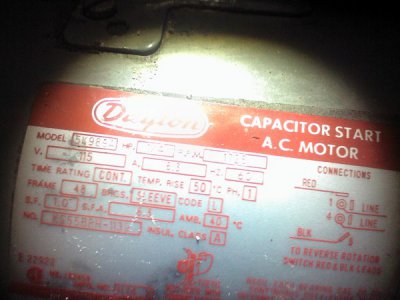OK, I finally managed to round up some tool bit holders & a set of change gears for threading on my recently acquired Atlas 10100 6" lathe. Was looking to make make some muzzle nuts that have an internal metric thread of 14-1 LH and was reading thru the manual on the lathe as well as some of the info. in the Atlas Manual of Lathe Operations & Threading Info. for Six Inch Lathe.
Which brings me to the questions I can't seem to has out for myself...On pg.41 of the Threading Info. for Six Inch Lathe in table III it states metric threads are possible but on pg.27 under the "cutting metric threads" section it states..."the motor must be reversed after each cut. This procedure is necessary because metric threads have no definite relation to the threading dial". It also goes on to state that "after the half-nut lever on the carriage is engaged for the first cut, it should not be moved until the thread has been completed. As the tool reaches the end of each cut, back out the cross feed, stop the lathe and reverse the motor until the tool has been returned to the starting position".
Since the Atlas 10100 I have doesn't have a reverse switch mechanism for the motor and additional reading advises against moving the reverse tumbler on pgs. 6-7..."After the tumbler gear lever has been shifted to the proper position, it should not be moved until the thread is completed. This is especially important because a shift in the lever position destroys the relation between the threading dial and the lathe spindle and causes splitting of the thread"....My question is how do I cut an internal 14-1 MM LH thread on the Atlas 10100 ?? Also, does the info. on NOT moving the reverse tumbler even apply since you don't use the threading dial when cutting metric threads but instead lock the half-nut lever until threading is completed ??
If you can actually move the reverse tumbler lever without screwing up the tool relationship to the initial cut, can this be done instead of having to reverse the motor since I don't have a reversing switch ?? This is my first lathe and I'm trying REALLY hard not to screw anything up...Thanks.
Which brings me to the questions I can't seem to has out for myself...On pg.41 of the Threading Info. for Six Inch Lathe in table III it states metric threads are possible but on pg.27 under the "cutting metric threads" section it states..."the motor must be reversed after each cut. This procedure is necessary because metric threads have no definite relation to the threading dial". It also goes on to state that "after the half-nut lever on the carriage is engaged for the first cut, it should not be moved until the thread has been completed. As the tool reaches the end of each cut, back out the cross feed, stop the lathe and reverse the motor until the tool has been returned to the starting position".
Since the Atlas 10100 I have doesn't have a reverse switch mechanism for the motor and additional reading advises against moving the reverse tumbler on pgs. 6-7..."After the tumbler gear lever has been shifted to the proper position, it should not be moved until the thread is completed. This is especially important because a shift in the lever position destroys the relation between the threading dial and the lathe spindle and causes splitting of the thread"....My question is how do I cut an internal 14-1 MM LH thread on the Atlas 10100 ?? Also, does the info. on NOT moving the reverse tumbler even apply since you don't use the threading dial when cutting metric threads but instead lock the half-nut lever until threading is completed ??
If you can actually move the reverse tumbler lever without screwing up the tool relationship to the initial cut, can this be done instead of having to reverse the motor since I don't have a reversing switch ?? This is my first lathe and I'm trying REALLY hard not to screw anything up...Thanks.




